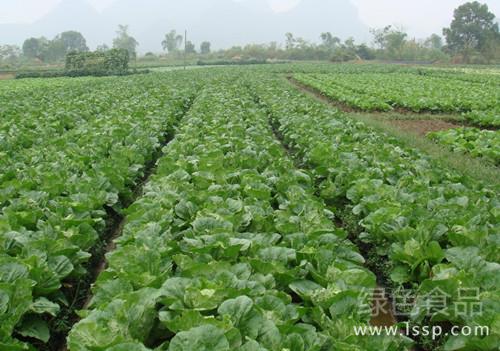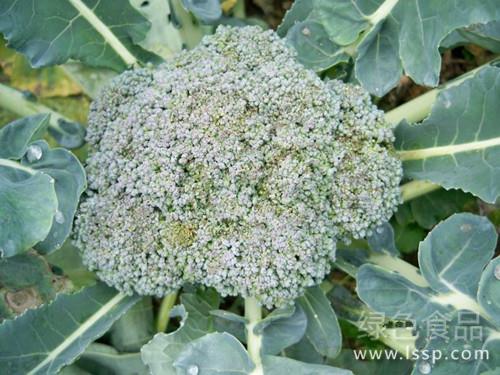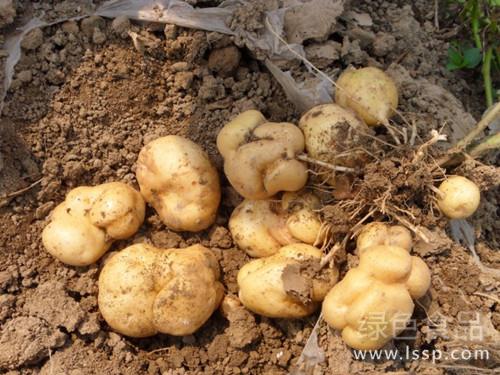Control methods of black spot of Chinese cabbage with halo on long brown leaf spot
Chinese cabbage black spot disease belongs to fungal disease. The affected Chinese cabbage leaves appear brown or light brown spots with a diameter of 2~10 mm, with halo rings outside, and there are obvious concentric ring patterns on them. When the humidity is high, black mold (pathogenic bacteria) is produced on the spots on the back of the leaves, and other Chinese cabbage can be harmed by air flow. When it is seriously ill, the spots on the leaves are connected to each other, making the leaves turn yellow and die from outside to inside. Its prevention measures are as follows:

Chinese cabbage
1. Seed treatment: Black spot pathogen can attach to Chinese cabbage seeds and directly infect seedlings. Therefore, Chinese cabbage seeds could be dressed with 50% thiram WP (0.4%) or 50% iprohydantoin WP (0.2%~0.3%) before sowing.
2, control field humidity: in the easy disease period, the field humidity is large, the disease is heavy.① Seeding at the right time. According to the variety characteristics of Chinese cabbage and soil fertility, proper plant spacing should be used to determine seedlings at appropriate time to improve field ventilation conditions. 2 Reasonable watering. In the easy disease period, we should "look at the sky, look at the ground, see the growth of Chinese cabbage," timely and appropriate amount of watering according to the ridge, should avoid watering after rainfall. The accumulated water in the field should be drained early.
3, early spraying: black spot pathogen invasion of Chinese cabbage leaves, after 3 to 5 days can form disease spots, disease spots can be born black mold, and then invade Chinese cabbage. Therefore, when the disease spots appear on the lower leaves of Chinese cabbage, spraying can be done. 600 times solution of 75% chlorothalonil wettable powder, 1500 times solution of 50% iprohydantoin wettable powder, or 500 times solution of 50% thiram wettable powder, or 500 times solution of 64% anti-alum wettable powder can be used. Spray once every 7~10 days, spray 3~5 times continuously, and spray 50 kg per mu each time.
4. Foliar fertilizer supplement: If the growth of Chinese cabbage is weak, in addition to strengthening water and fertilizer management, 0.2% potassium dihydrogen phosphate or 1% red (white) sugar can be added to the sprayed solution to supplement nutrients for the leaves.
5. Precautions: ① Easy to develop plots. The land with continuous stubble and adjacent stubble of cruciferous vegetables, the land sown without seed treatment, the land sown too early, the land with high density of Chinese cabbage in the field, the land with insufficient basal fertilizer and topdressing, the land with weak growth of Chinese cabbage, and the land irrigated with heavy water are prone to disease. 2 vulnerable vegetables. In addition to Chinese cabbage, radish, cabbage, rape (pakchoi or cabbage), cauliflower (cauliflower) and so on are also susceptible to the disease, control measures can refer to Chinese cabbage.
- Prev

Control of black rot of green cauliflower after waterlogged cotyledons
Control of black rot of green cauliflower after waterlogged cotyledons
- Next

Malformed Potato affects Commodity how to reduce the deformed rate of Potato
Malformed Potato affects Commodity how to reduce the deformed rate of Potato
Related
- Fuxing push coffee new agricultural production and marketing class: lack of small-scale processing plants
- Jujube rice field leisure farm deep ploughing Yilan for five years to create a space for organic food and play
- Nongyu Farm-A trial of organic papaya for brave women with advanced technology
- Four points for attention in the prevention and control of diseases and insect pests of edible fungi
- How to add nutrient solution to Edible Fungi
- Is there any good way to control edible fungus mites?
- Open Inoculation Technology of Edible Fungi
- Is there any clever way to use fertilizer for edible fungus in winter?
- What agents are used to kill the pathogens of edible fungi in the mushroom shed?
- Rapid drying of Edible Fungi

